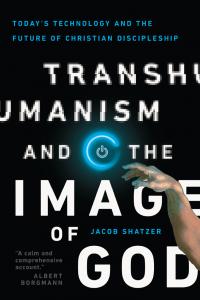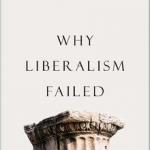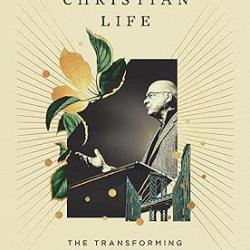About ten pages into Jacob Shatzer’s recent book Transhumanism and the Image of God: Today’s Technology and the Future of Christian Discipleship, I told the wife that it was time for us to move to a cabin in Montana and go completely off the grid. She asked where we would get our coffee, and after considering some form of regular air drop or mule train, I decided that it’s probably better to just try to get by in the awful world we’re quickly building for ourselves.
And just what do we need to know about the world we’re making? Defining, explaining and responding to one such future vision, that of “transhumanism”, is the goal of Shatzer’s important book.

Just what is “transhumanism”? There’s not an easy or short answer to that, but in part it includes the idea that “by applying technology to ourselves, we can move beyond [humanity] and become something that is posthuman.” (41) In other words, technology will help us “to improve human intelligence, physical strength, and the five senses” to the point where we are functionally a different–and better–species. (40)
The bulk of this book is dedicated to exploring the different ways and areas in which this worldview works itself out. Everything from “morphological freedom” (the “right” to adapt our bodies as we see fit) to virtual reality to relationships and lives in cyberspace is a part of the coming transhuman future, to say nothing of the very world we live in now. How are we to navigate a world that is so different from anything that has existed in the past? How do we interact with people whose primary social networks are, well, social networks? How do we declare God’s Word to those who are confused about their own biologies? Can we even use technology without becoming defacto transhumanists ourselves?
Shatzer helps us think through all these questions and more. And these are important for us to think through, given how pervasive technology has become in the world (and yes, I know the irony of saying that on a website that by definition I am posting and you are accessing on the internet, so don’t bother pointing it out). We will be affected by what exists now and what is coming in the future, so we had better be prepared to think and act well about it.
And while we’re thinking and acting, it’s important to remember that the transhumanists have the kernel of a good idea in their hands, even if it is poorly understood, weakly articulated, and improperly applied. Specifically, there is a part of human nature that longs to be something more. We are made to, well, to “transcend” the weak, limited, and wicked beings that we are now. Part of having been redeemed by Christ’s atoning sacrifice is the promise that we will be resurrected into new and better bodies. Heaven, when the Kingdom comes, will be a physical place where what we are now is made complete and transformed into what deep down we know it should be. This will not be accomplished by technology, but by the fallen world being broken, set aside, and made new at the return of Christ.
Which is to say, it isn’t wrong to desire something better. That desire is a place where we can speak to the transhumanists of the hope we have for true improvement accomplished by the only one who can work real change.
Of course there are other issues here as well. The church should act as a sort-of anti-transhuman (in the sense in which many transhumanists mean it) corporate body that eschews placing electronics between us and requires its members to do the awkward, difficult, and increasingly counter-cultural work of being in physical proximity to each other and having relationships that are not filtered by a digital facade.
Transhumanism and the Image of God is an important guide to helping us think about how these things can be accomplished, and why it is so important that we go about doing so immediately.
Highly recommended.
Dr. Coyle Neal is co-host of the City of Man Podcast and an Associate Professor of Political Science at Southwest Baptist University in Bolivar, MO













